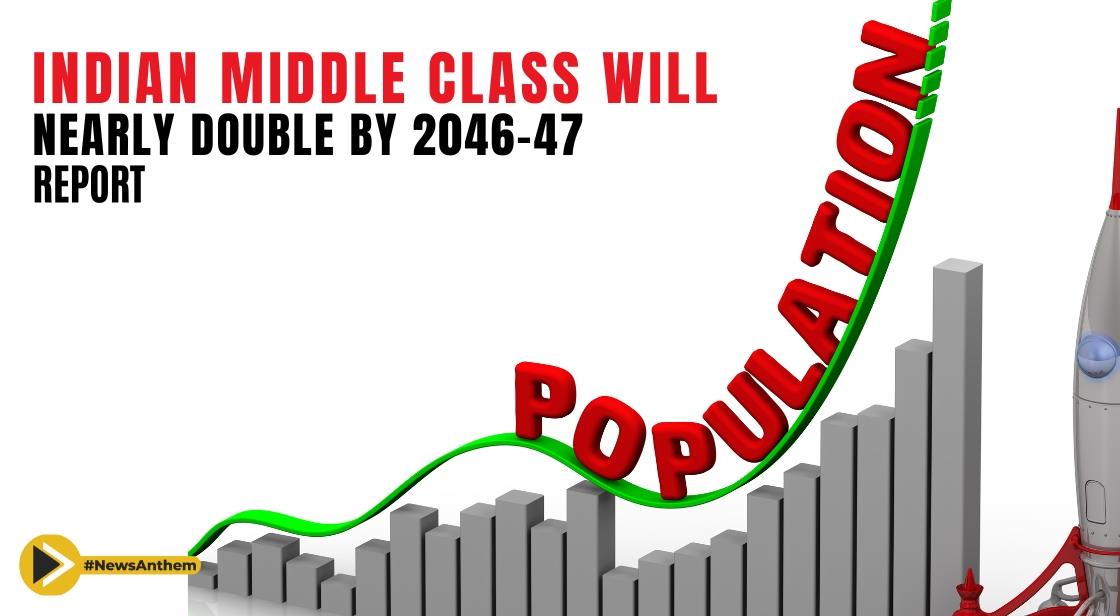India's Middle Class to Witness Rapid Growth, Reaching 61% by 2046-47: PRICE Report

News Synopsis
India's Middle Class Set to Expand, Propelling Economic Growth
India's middle class is anticipated to experience remarkable growth in the coming decades, according to a comprehensive report released by People Research on India's Consumer Economy (PRICE) and India's Citizen Environment. The study predicts that the middle class will nearly double from 31% of the population in 2020-21 to a staggering 61% by 2046-47.
This growth trajectory is attributed to several key factors, including political stability, ongoing economic reforms, and a sustained annual growth rate of 6% to 7%.
Middle Class Surge: Projections and Definitions
The report forecasts that the Indian middle class will witness significant expansion over the next few decades. From the current count of 432 million individuals in 2020–21, the middle class is projected to grow to 715 million (47% of the population) by 2030–31. By 2046-47, it is expected to reach an impressive 1.02 billion, accounting for a substantial portion of India's projected population of 1.66 billion.
To define the middle class, the think tank PRICE employs income thresholds in both individual and household terms. In 2020-21 pricing, an individual with an annual income ranging from US$ 1,322.77 (Rs. 1.09 lakh) to US$ 7,839.51 (Rs. 6.46 lakh) falls within the middle-class bracket.
In household terms, this corresponds to an annual income ranging from US$ 6,067.74 (Rs. 5 lakh) to US$ 36,406.41 (Rs. 30 lakh).
Implications and Opportunities for India's Growth
Former NITI Aayog Chief Executive Officer, Mr. Amitabh Kant, emphasizes that as the proportion of middle-class households increases, so does the demand for high-quality consumer products, housing, education, and healthcare. This shift in consumer behavior and aspirations poses both challenges and opportunities for the Indian government.
Job creation and fostering education and health opportunities must be prioritized to support the middle class and realize India's vision of becoming a fully developed country by 2047.
The demographic structure of India is expected to undergo a significant transformation. The country's current inverted pyramid, characterized by a small wealthy class and a large low-income class, will evolve into a rudimentary diamond shape. This transformation will result from a substantial portion of the low-income class ascending to the middle class.
Super-Rich Households on the Rise
The PRICE report also highlights the growth of India's super-rich households. Over the next decade, there is projected to be a fivefold increase in super-rich households, with a significant portion of this growth stemming from rural areas.
The number of super-rich households, defined as those earning more than US$ 2,42,709.40 (Rs. 2 crore) annually, increased from 1.06 million in 2016 to 1.8 million in 2021.
In terms of regional distribution, the western region boasts the highest number of super-rich households, with Maharashtra leading the way with 648,000 households.
Delhi follows closely with 181,000 households, while Gujarat, Tamil Nadu, and Punjab also exhibit significant numbers. Maharashtra and Delhi combined account for nearly half of India's super-rich population.
Consumption Patterns and Economic Disparities
The report highlights the stark differences in expenditure patterns between different income groups. Middle-class households, on average, spend eight times more than poor households, reflecting their increased purchasing power. Meanwhile, affluent households spend approximately 25 times more than their less fortunate counterparts.
This disparity underscores the importance of addressing economic inequalities and fostering inclusive growth.
Conclusion
India's middle class is set to become a key driver of the country's growth story, with projections indicating a significant rise in both middle-class and super-rich households. As India continues on its path of economic reforms and sustained growth, it is poised to emerge as one of the world's largest consumer markets, presenting immense opportunities for businesses across sectors.
You May Like









